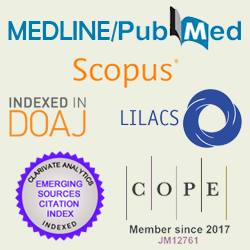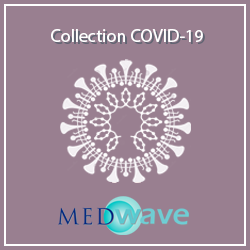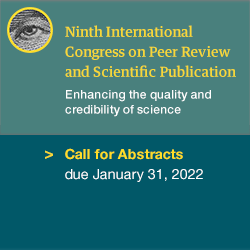Abstract
Postpolypectomy bleeding after colonoscopy with resection of large colorectal polyps can cause significant morbidity (readmission for monitoring, transfusion, repeat endoscopy and therapy) and a significant cost to hospitals and insurers. Nevertheless prophylactic endoscopic measures could reduce risk of postpolypectomy bleeding. Searching in Epistemonikos database, which is maintained by screening 30 databases, we identified two systematic reviews including 10 randomized trials. We combined the evidence using meta-analysis and generated a summary of findings table following the GRADE approach. We concluded prophylactic endoscopic measures could be effective in reducing postpolypectomy bleeding after resection of large colorectal polyps.
Problem
Colorectal cancer is the third leading cause of cancer death in Western populations [1],[2]. Colonoscopy has become the most widely accepted method for colon cancer screening because it reduces mortality and the incidence of cancer by identification and removal of precancerous lesions [3],[4],[5],[6],[7],[8].
Bleeding is the most frequently observed complication after polypectomy that can occur early (during and within 24 hours of the procedure) or delayed (usually in the first few days until four weeks after colonoscopy). postpolypectomy bleeding can cause significant morbidity (readmission for monitoring, transfusion, repeat endoscopy and therapy) and a significant cost to hospitals and insurers.
The main predictor of postpolypectomy bleeding is the size of the polyp. For example, for polyps > 20 mm located in the right colon, postpolypectomy bleeding rates exceeding 10% have been reported [9],[10],[11],[12],[13],[14],[15],[16],[17].
Prophylactic measures like adrenaline injection, argon plasma coagulation or mechanical haemostasis (endoclips or endoloops) have been studied. These interventions could reduce risk of bleeding but have not been universally adopted for endoscopists, or recommended in guidelines [18],[19],[20],[21],[22],[23],[24].
Methods
We used Epistemonikos database, which is maintained by screening more than 30 databases, to identify systematic reviews and their included primary studies. With this information we generated a structured summary using a pre-established format, which includes key messages, a summary of the body of evidence (presented as an evidence matrix in Epistemonikos), meta-analysis of the total of studies, a summary of findings table following the GRADE approach and a table of other considerations for decision-making.
|
Key messages
|
About the body of evidence for this question
|
What is the evidence. |
We found two systematic reviews [25],[26], which include 10 randomized controlled trials [19],[20],[21],[22],[23],[24],[27],[28],[29],[30]. |
|
What types of patients were included |
Patients undergoing colonoscopy with resection of colorectal polyps larger than 10 mm. |
|
What types of interventions were included |
Prophylactic endoscopic haemostatic measures (adrenaline injection, argon plasma coagulation, endoclips or endoloops). |
|
What types of outcomes |
Early (within 24 hours of the procedure) or delayed bleeding (first few days until four weeks after colonoscopy). Presenting as haematochezia, >10% drop in haematocrit or decrease in the level of hemoglobin > 1 mg/d. Length of hospital stay Postpolypectomy syndrome (abdominal pain, fever, leukocytosis, increased C-Reactive Protein, or signs or symptoms of peritoneal irritation 4 to 24 hours after colonoscopic polypectomy with electrocoagulation in the absence of visualized perforation on abdominal computed tomography). |
Summary of findings
Information on the effects of endoscopic prophylactic haemostatic measures for postpolypectomy bleeding is based on 13 randomized trials involving 4,899 patients.
Ten studies assessed at least one prophylactic measure versus no prophylaxis; five compared adrenaline versus no intervention or placebo (saline solution injection]; one study compared detachable snare (endoloop) versus no intervention; another study compared endoloop or adrenaline versus no intervention; and three studies assessed clips versus no intervention. The remaining three studies compared different prophylactic measures (clips + endoloop versus adrenaline, endoloop + adrenaline versus adrenaline, and argon plasma coagulation versus adrenaline).
All studies reported total postpolypectomy bleeding (early + delayed), and seven studies also informed delayed bleeding. Three studies reported length of hospital stay but the information could only be extracted for two of them. One study also assessed postpolypectomy syndrome [19],[20],[21],[22],[23],[24],[27],[28],[29],[30],[31],[32].
The summary of findings is the following:
- Prophylactic measures (adrenaline injection, argon plasma coagulation, clips or endoloops) are effective in reducing the risk of total postpolypectomy bleeding (early + delayed) after resection of large colorectal polyps. The certainty of the evidence is high.
- Use of prophylactic measures (adrenaline injection, argon plasma coagulation, clips or endoloops) could be effective in reducing the length of hospital stay. The certainty of the evidence is low.
- The use of combined prophylactic mechanical measures (clips or endoloops) or argon plasma coagulation, plus adrenaline could be more effective than single adrenaline injection in reducing the risk of global postpolypectomy bleeding. The certainty of the evidence is low.
- The effect of prophylactic measures on postpolypectomy syndrome is not clear because the certainty of the evidence is very low.
- Prophylactic measures (adrenaline injection, argon plasma coagulation, clips or endoloops) are probably not associated with significant complications. The certainty of the evidence is moderate.
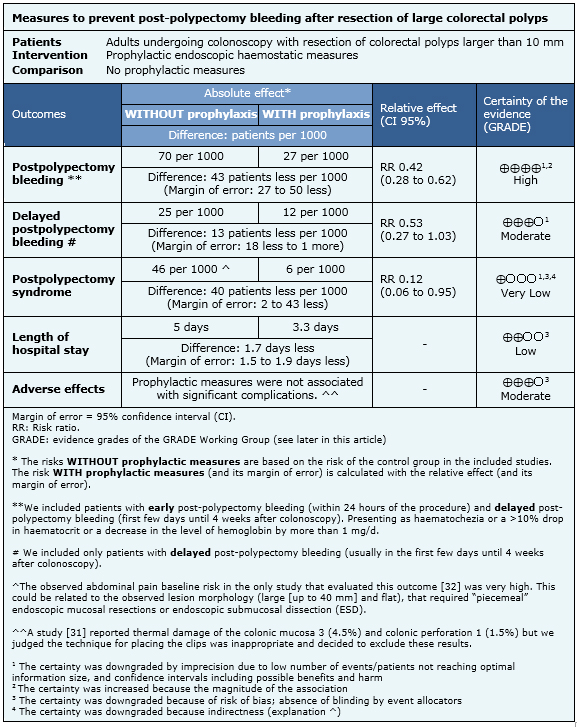
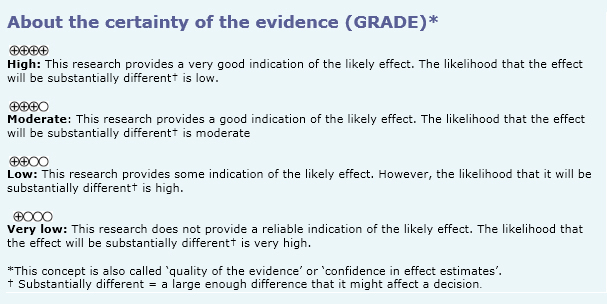
Other considerations for decision-making
|
To whom this evidence does and does not apply |
|
| About the outcomes included in this summary |
|
| Balance between benefits and risks, and certainty of the evidence |
|
| What would patients and their doctors think about this intervention |
|
| Resource considerations |
|
|
Differences between this summary and other sources |
|
| Could this evidence change in the future? |
|
How we conducted this summary
Using automated and collaborative means, we compiled all the relevant evidence for the question of interest and we present it as a matrix of evidence.
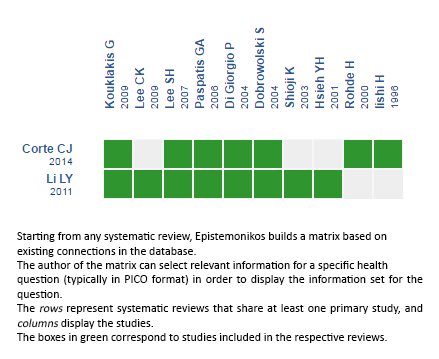
Follow the link to access the interactive version: Prophylactic endoscopic treatments for colorectal postpolypectomy bleeding
Notes
The upper portion of the matrix of evidence will display a warning of “new evidence” if new systematic reviews are published after the publication of this summary. Even though the project considers the periodical update of these summaries, users are invited to comment in Medwave or to contact the authors through email if they find new evidence and the summary should be updated earlier. After creating an account in Epistemonikos, users will be able to save the matrixes and to receive automated notifications any time new evidence potentially relevant for the question appears.
The details about the methods used to produce these summaries are described here http://dx.doi.org/10.5867/medwave.2014.06.5997.
Epistemonikos foundation is a non-for-profit organization aiming to bring information closer to health decision-makers with technology. Its main development is Epistemonikos database (www.epistemonikos.org).
These summaries follow a rigorous process of internal peer review.
Conflicts of interest
The authors do not have relevant interests to declare.
 Esta obra de Medwave está bajo una licencia Creative Commons Atribución-NoComercial 3.0 Unported. Esta licencia permite el uso, distribución y reproducción del artículo en cualquier medio, siempre y cuando se otorgue el crédito correspondiente al autor del artículo y al medio en que se publica, en este caso, Medwave.
Esta obra de Medwave está bajo una licencia Creative Commons Atribución-NoComercial 3.0 Unported. Esta licencia permite el uso, distribución y reproducción del artículo en cualquier medio, siempre y cuando se otorgue el crédito correspondiente al autor del artículo y al medio en que se publica, en este caso, Medwave.

Luego de resecar pólipos colorrectales grandes por vía endoscópica, existen medidas hemostáticas profilácticas que podrían disminuir el riesgo de sangrado postpolipectomía, y así evitar nuevos procedimientos, transfusiones u hospitalizaciones innecesarias, con el deterioro en la calidad de vida de los pacientes y el aumento de los costos que esto implica. Utilizando la base de datos Epistemonikos, la cual es mantenida mediante búsquedas en 30 bases de datos, identificamos dos revisiones sistemáticas que incluyen 10 estudios controlados aleatorizados. Los combinamos mediante un metanálisis y generamos tablas de resumen de resultados utilizando el método GRADE. Concluimos que las medidas hemostáticas endoscópicas profilácticas reducen el riesgo de sangrado postpolipectomía luego de resecar pólipos colorrectales grandes.
 Authors:
Estanislao J. Gómez [1,2 ], Ariel Izcovich[2,3 ]
Authors:
Estanislao J. Gómez [1,2 ], Ariel Izcovich[2,3 ]
Affiliation:
[1] Servicios de Gastroenterología y Endoscopía Digestiva, Hospital Alemán, Buenos Aires, Argentina
[2] Programa de Medicina Basada en Pruebas, Hospital Alemán, Buenos Aires, Argentina
[3] Servicio de clínica médica, Hospital Alemán, Buenos Aires, Argentina
E-mail: ariel.izcovich@gmail.com
Author address:
[1] Hospital Alemán de Buenos Aires
Av. Pueyrredon 1640
CP C118AAT
+54114827700

Citation: Gómez EJ, Izcovich A . Should prophylactic measures to prevent postpolypectomy bleeding after resection of large colorectal polyps be used?. Medwave 2016;16(Suppl3):e6496 doi: 10.5867/medwave.2016.6496
Publication date: 3/8/2016

Comments (0)
We are pleased to have your comment on one of our articles. Your comment will be published as soon as it is posted. However, Medwave reserves the right to remove it later if the editors consider your comment to be: offensive in some sense, irrelevant, trivial, contains grammatical mistakes, contains political harangues, appears to be advertising, contains data from a particular person or suggests the need for changes in practice in terms of diagnostic, preventive or therapeutic interventions, if that evidence has not previously been published in a peer-reviewed journal.
No comments on this article.
To comment please log in
 Medwave provides HTML and PDF download counts as well as other harvested interaction metrics.
Medwave provides HTML and PDF download counts as well as other harvested interaction metrics. There may be a 48-hour delay for most recent metrics to be posted.

- Ferlay J, Shin HR, Bray F, Forman D, Mathers C, Parkin DM. Estimates of worldwide burden of cancer in 2008: GLOBOCAN 2008. Int J Cancer. 2010 Dec 15;127(12):2893-917. | CrossRef | PubMed |
- Jemal A, Center MM, DeSantis C, Ward EM. Global patterns of cancer incidence and mortality rates and trends. Cancer Epidemiol Biomarkers Prev. 2010 Aug;19(8):1893-907. | CrossRef | PubMed |
- Winawer SJ, Zauber AG, Ho MN, O'Brien MJ, Gottlieb LS, Sternberg SS, et al. Prevention of colorectal cancer by colonoscopic polypectomy. The National Polyp Study Workgroup. N Engl J Med. 1993 Dec 30;329(27):1977-81. | PubMed |
- Atkin WS, Edwards R, Kralj-Hans I, Wooldrage K, Hart AR, Northover JM, et al. Once-only flexible sigmoidoscopy screening in prevention of colorectal cancer: a multicentre randomised controlled trial. Lancet. 2010 May 8;375(9726):1624-33. | CrossRef | PubMed |
- Zauber AG, Winawer SJ, O'Brien MJ, Lansdorp-Vogelaar I, van Ballegooijen M, Hankey BF, et al. Colonoscopic polypectomy and long-term prevention of colorectal-cancer deaths. N Engl J Med. 2012 Feb 23;366(8):687-96. | CrossRef | PubMed |
- Baxter NN, Goldwasser MA, Paszat LF, Saskin R, Urbach DR, Rabeneck L. Association of colonoscopy and death from colorectal cancer. Ann Intern Med. 2009 Jan 6;150(1):1-8. | PubMed |
- Singh H, Nugent Z, Demers AA, Kliewer EV, Mahmud SM, Bernstein CN. The reduction in colorectal cancer mortality after colonoscopy varies by site of the cancer. Gastroenterology. 2010 Oct;139(4):1128-37. | CrossRef | PubMed |
- Lieberman DA, Rex DK, Winawer SJ, Giardiello FM, Johnson DA, Levin TR, et al. Guidelines for colonoscopy surveillance after screening and polypectomy: a consensus update by the US Multi-Society Task Force on Colorectal Cancer. Gastroenterology. 2012 Sep;143(3):844-57. | CrossRef | PubMed |
- Singh M, Mehta N, Murthy UK, Kaul V, Arif A, Newman N. Postpolypectomy bleeding in patients undergoing colonoscopy on uninterrupted clopidogrel therapy. Gastrointest Endosc. 2010 May;71(6):998-1005. | CrossRef | PubMed |
- Watabe H, Yamaji Y, Okamoto M, Kondo S, Ohta M, Ikenoue T, et al. Risk assessment for delayed hemorrhagic complication of colonic polypectomy: polyp-related factors and patient-related factors. Gastrointest Endosc. 2006 Jul;64(1):73-8. | PubMed |
- Witt DM, Delate T, McCool KH, Dowd MB, Clark NP, Crowther MA, et al. Incidence and predictors of bleeding or thrombosis after polypectomy in patients receiving and not receiving anticoagulation therapy. J Thromb Haemost. 2009 Dec;7(12):1982-9. | CrossRef | PubMed |
- Sawhney MS, Salfiti N, Nelson DB, Lederle FA, Bond JH. Risk factors for severe delayed postpolypectomy bleeding. Endoscopy. 2008 Feb;40(2):115-9. | CrossRef | PubMed |
- Feagins LA, Uddin FS, Davila RE, Harford WV, Spechler SJ. The rate of post-polypectomy bleeding for patients on uninterrupted clopidogrel therapy during elective colonoscopy is acceptably low. Dig Dis Sci. 2011 Sep;56(9):2631-8. | CrossRef | PubMed |
- Khubchandani IT, Heyrosa MG, Thekkeurumbil SV. Optimal timing of anticoagulation pre- and post-colonoscopy with polypectomy. Tech Coloproctol. 2011 Jun;15(2):185-9. | CrossRef | PubMed |
- Gerson LB, Michaels L, Ullah N, Gage B, Williams L. Adverse events associated with anticoagulation therapy in the periendoscopic period. Gastrointest Endosc. 2010 Jun;71(7):1211-1217.e2. | CrossRef | PubMed |
- Zubarik R, Fleischer DE, Mastropietro C, Lopez J, Carroll J, Benjamin S, et al. Prospective analysis of complications 30 days after outpatient colonoscopy. Gastrointest Endosc. 1999 Sep;50(3):322-8. | PubMed |
- Sorbi D, Norton I, Conio M, Balm R, Zinsmeister A, Gostout CJ. Postpolypectomy lower GI bleeding: descriptive analysis. Gastrointest Endosc. 2000 Jun;51(6):690-6. | PubMed |
- Rex DK, Schoenfeld PS, Cohen J, Pike IM, Adler DG, Fennerty MB, et al. Quality indicators for colonoscopy. Gastrointest Endosc. 2015 Jan;81(1):31-53. | CrossRef | PubMed |
- Rohde H, Guenther MW, Budde R, Mühlhofer H. Randomized trial of prophylactic epinephrine-saline injection before snare polypectomy to prevent bleeding. Endoscopy. 2000 Dec;32(12):1004-5. | PubMed |
- Di Giorgio P, De Luca L, Calcagno G, Rivellini G, Mandato M, De Luca B. Detachable snare versus epinephrine injection in the prevention of postpolypectomy bleeding: a randomized and controlled study. Endoscopy. 2004 Oct;36(10):860-3. | PubMed |
- Paspatis GA, Paraskeva K, Theodoropoulou A, Mathou N, Vardas E, Oustamanolakis P, et al. A prospective, randomized comparison of adrenaline injection in combination with detachable snare versus adrenaline injection alone in the prevention of postpolypectomy bleeding in large colonic polyps. Am J Gastroenterol. 2006 Dec;101(12):2805. | PubMed |
- Kouklakis G, Mpoumponaris A, Gatopoulou A, Efraimidou E, Manolas K, Lirantzopoulos N. Endoscopic resection of large pedunculated colonic polyps and risk of postpolypectomy bleeding with adrenaline injection versus endoloop and hemoclip: a prospective, randomized study. Surg Endosc. 2009 Dec;23(12):2732-7. | CrossRef | PubMed |
- Dobrowolski S, Dobosz M, Babicki A, Dymecki D, Hać S. Prophylactic submucosal saline-adrenaline injection in colonoscopic polypectomy: prospective randomized study. Surg Endosc. 2004 Jun;18(6):990-3. | PubMed |
- Lee SH, Chung IK, Kim SJ, Kim JO, Ko BM, Kim WH, et al. Comparison of postpolypectomy bleeding between epinephrine and saline submucosal injection for large colon polyps by conventional polypectomy: a prospective randomized, multicenter study. World J Gastroenterol. 2007 Jun 7;13(21):2973-7. | PubMed |
- Corte CJ, Burger DC, Horgan G, Bailey AA, East JE. Postpolypectomy haemorrhage following removal of large polyps using mechanical haemostasis or epinephrine: a meta-analysis. United European Gastroenterol J. 2014 Apr;2(2):123-30. | CrossRef | PubMed |
- Li LY, Liu QS, Li L, Cao YJ, Yuan Q, Liang SW, et al. A meta-analysis and systematic review of prophylactic endoscopic treatments for postpolypectomy bleeding. Int J Colorectal Dis. 2011 Jun;26(6):709-19. | CrossRef | PubMed |
- Iishi H, Tatsuta M, Narahara H, Iseki K, Sakai N. Endoscopic resection of large pedunculated colorectal polyps using a detachable snare. Gastrointest Endosc. 1996 Nov;44(5):594-7. | PubMed |
- Hsieh YH, Lin HJ, Tseng GY, Perng CL, Li AF, Chang FY, Lee SD. Is submucosal epinephrine injection necessary before polypectomy? A prospective, comparative study. Hepatogastroenterology. 2001 Sep-Oct;48(41):1379-82. | PubMed |
- Lee CK, Lee SH, Park JY, Lee TH, Chung IK, Park SH, et al. Prophylactic argon plasma coagulation ablation does not decrease delayed postpolypectomy bleeding. Gastrointest Endosc. 2009 Aug;70(2):353-61. | CrossRef | PubMed |
- Shioji K, Suzuki Y, Kobayashi M, Nakamura A, Azumaya M, Takeuchi M, et al. Prophylactic clip application does not decrease delayed bleeding after colonoscopic polypectomy. Gastrointest Endosc. 2003 May;57(6):691-4. | PubMed |
- Quintanilla E, Castro JL, Rábago LR, Chico I, Olivares A, Ortega A, et al. Is the use of prophylactic hemoclips in the endoscopic resection of large pedunculated polyps useful? A prospective and randomized study. J Interv Gastroenterol. 2012 Apr;2(2):99-104. | PubMed |
- Zhang QS, Han B, Xu JH, Gao P, Shen YC. Clip closure of defect after endoscopic resection in patients with larger colorectal tumors decreased the adverse events. Gastrointest Endosc. 2015 Nov;82(5):904-9. | CrossRef | PubMed |
- Burgess NG, Bahin FF, Bourke MJ. Colonic polypectomy (with videos). Gastrointest Endosc. 2015 Apr;81(4):813-35. | CrossRef | PubMed |
- Bourke MJ, Rex DK. Tips for better colonoscopy from two experts. Am J Gastroenterol. 2012 Oct;107(10):1467-72. | CrossRef | PubMed |
- Seitz U, Bohnacker S, Seewald S, Thonke F, Soehendra N. Long-term results of endoscopic removal of large colorectal adenomas. Endoscopy. 2003 Aug;35(8):S41-4. | PubMed |
- Saltzman JR. Bleeding after colonic polypectomy. UpToDate. Topic last updated: Aug 03, 2015. uptodate.com [on line] | Link |
- Boustière C, Veitch A, Vanbiervliet G, Bulois P, Deprez P, Laquiere A, et al. Endoscopy and antiplatelet agents. European Society of Gastrointestinal Endoscopy (ESGE) Guideline. Endoscopy. 2011 May;43(5):445-61. | CrossRef | PubMed |
- Kyung-Jo Kim, et al. Does a Prophylactic Clip Application Decrease IPPB (Immediate Postpolypectomy Bleeding) and DPPB (Delayed Postpolypectomy Bleeding) After Colonoscopic Removal for a Large Pedunculated Polyps (>1cm)? 2015. NCT01437631. Clinicaltrials. gov [on line]. | Link |
- Feagins LA, et al. Risk of Post-Polypectomy Bleeding With Prophylactic Hemoclipping. 2015. NCT01647581. Clinicaltrials. gov [on line]. | Link |
- Matsumoto M, Kato M, Oba K, Abiko S, Tsuda M, Miyamoto S, et al. Multicenter randomized controlled study to assess the effect of prophylactic clipping on post-polypectomy delayed bleeding. Dig Endosc. 2016 Mar 28. | CrossRef | PubMed |
 Ferlay J, Shin HR, Bray F, Forman D, Mathers C, Parkin DM. Estimates of worldwide burden of cancer in 2008: GLOBOCAN 2008. Int J Cancer. 2010 Dec 15;127(12):2893-917. | CrossRef | PubMed |
Ferlay J, Shin HR, Bray F, Forman D, Mathers C, Parkin DM. Estimates of worldwide burden of cancer in 2008: GLOBOCAN 2008. Int J Cancer. 2010 Dec 15;127(12):2893-917. | CrossRef | PubMed | Jemal A, Center MM, DeSantis C, Ward EM. Global patterns of cancer incidence and mortality rates and trends. Cancer Epidemiol Biomarkers Prev. 2010 Aug;19(8):1893-907. | CrossRef | PubMed |
Jemal A, Center MM, DeSantis C, Ward EM. Global patterns of cancer incidence and mortality rates and trends. Cancer Epidemiol Biomarkers Prev. 2010 Aug;19(8):1893-907. | CrossRef | PubMed | Winawer SJ, Zauber AG, Ho MN, O'Brien MJ, Gottlieb LS, Sternberg SS, et al. Prevention of colorectal cancer by colonoscopic polypectomy. The National Polyp Study Workgroup. N Engl J Med. 1993 Dec 30;329(27):1977-81. | PubMed |
Winawer SJ, Zauber AG, Ho MN, O'Brien MJ, Gottlieb LS, Sternberg SS, et al. Prevention of colorectal cancer by colonoscopic polypectomy. The National Polyp Study Workgroup. N Engl J Med. 1993 Dec 30;329(27):1977-81. | PubMed | Atkin WS, Edwards R, Kralj-Hans I, Wooldrage K, Hart AR, Northover JM, et al. Once-only flexible sigmoidoscopy screening in prevention of colorectal cancer: a multicentre randomised controlled trial. Lancet. 2010 May 8;375(9726):1624-33. | CrossRef | PubMed |
Atkin WS, Edwards R, Kralj-Hans I, Wooldrage K, Hart AR, Northover JM, et al. Once-only flexible sigmoidoscopy screening in prevention of colorectal cancer: a multicentre randomised controlled trial. Lancet. 2010 May 8;375(9726):1624-33. | CrossRef | PubMed | Zauber AG, Winawer SJ, O'Brien MJ, Lansdorp-Vogelaar I, van Ballegooijen M, Hankey BF, et al. Colonoscopic polypectomy and long-term prevention of colorectal-cancer deaths. N Engl J Med. 2012 Feb 23;366(8):687-96. | CrossRef | PubMed |
Zauber AG, Winawer SJ, O'Brien MJ, Lansdorp-Vogelaar I, van Ballegooijen M, Hankey BF, et al. Colonoscopic polypectomy and long-term prevention of colorectal-cancer deaths. N Engl J Med. 2012 Feb 23;366(8):687-96. | CrossRef | PubMed | Baxter NN, Goldwasser MA, Paszat LF, Saskin R, Urbach DR, Rabeneck L. Association of colonoscopy and death from colorectal cancer. Ann Intern Med. 2009 Jan 6;150(1):1-8. | PubMed |
Baxter NN, Goldwasser MA, Paszat LF, Saskin R, Urbach DR, Rabeneck L. Association of colonoscopy and death from colorectal cancer. Ann Intern Med. 2009 Jan 6;150(1):1-8. | PubMed | Singh H, Nugent Z, Demers AA, Kliewer EV, Mahmud SM, Bernstein CN. The reduction in colorectal cancer mortality after colonoscopy varies by site of the cancer. Gastroenterology. 2010 Oct;139(4):1128-37. | CrossRef | PubMed |
Singh H, Nugent Z, Demers AA, Kliewer EV, Mahmud SM, Bernstein CN. The reduction in colorectal cancer mortality after colonoscopy varies by site of the cancer. Gastroenterology. 2010 Oct;139(4):1128-37. | CrossRef | PubMed | Lieberman DA, Rex DK, Winawer SJ, Giardiello FM, Johnson DA, Levin TR, et al. Guidelines for colonoscopy surveillance after screening and polypectomy: a consensus update by the US Multi-Society Task Force on Colorectal Cancer. Gastroenterology. 2012 Sep;143(3):844-57. | CrossRef | PubMed |
Lieberman DA, Rex DK, Winawer SJ, Giardiello FM, Johnson DA, Levin TR, et al. Guidelines for colonoscopy surveillance after screening and polypectomy: a consensus update by the US Multi-Society Task Force on Colorectal Cancer. Gastroenterology. 2012 Sep;143(3):844-57. | CrossRef | PubMed | Singh M, Mehta N, Murthy UK, Kaul V, Arif A, Newman N. Postpolypectomy bleeding in patients undergoing colonoscopy on uninterrupted clopidogrel therapy. Gastrointest Endosc. 2010 May;71(6):998-1005. | CrossRef | PubMed |
Singh M, Mehta N, Murthy UK, Kaul V, Arif A, Newman N. Postpolypectomy bleeding in patients undergoing colonoscopy on uninterrupted clopidogrel therapy. Gastrointest Endosc. 2010 May;71(6):998-1005. | CrossRef | PubMed | Watabe H, Yamaji Y, Okamoto M, Kondo S, Ohta M, Ikenoue T, et al. Risk assessment for delayed hemorrhagic complication of colonic polypectomy: polyp-related factors and patient-related factors. Gastrointest Endosc. 2006 Jul;64(1):73-8. | PubMed |
Watabe H, Yamaji Y, Okamoto M, Kondo S, Ohta M, Ikenoue T, et al. Risk assessment for delayed hemorrhagic complication of colonic polypectomy: polyp-related factors and patient-related factors. Gastrointest Endosc. 2006 Jul;64(1):73-8. | PubMed | Witt DM, Delate T, McCool KH, Dowd MB, Clark NP, Crowther MA, et al. Incidence and predictors of bleeding or thrombosis after polypectomy in patients receiving and not receiving anticoagulation therapy. J Thromb Haemost. 2009 Dec;7(12):1982-9. | CrossRef | PubMed |
Witt DM, Delate T, McCool KH, Dowd MB, Clark NP, Crowther MA, et al. Incidence and predictors of bleeding or thrombosis after polypectomy in patients receiving and not receiving anticoagulation therapy. J Thromb Haemost. 2009 Dec;7(12):1982-9. | CrossRef | PubMed | Sawhney MS, Salfiti N, Nelson DB, Lederle FA, Bond JH. Risk factors for severe delayed postpolypectomy bleeding. Endoscopy. 2008 Feb;40(2):115-9. | CrossRef | PubMed |
Sawhney MS, Salfiti N, Nelson DB, Lederle FA, Bond JH. Risk factors for severe delayed postpolypectomy bleeding. Endoscopy. 2008 Feb;40(2):115-9. | CrossRef | PubMed | Feagins LA, Uddin FS, Davila RE, Harford WV, Spechler SJ. The rate of post-polypectomy bleeding for patients on uninterrupted clopidogrel therapy during elective colonoscopy is acceptably low. Dig Dis Sci. 2011 Sep;56(9):2631-8. | CrossRef | PubMed |
Feagins LA, Uddin FS, Davila RE, Harford WV, Spechler SJ. The rate of post-polypectomy bleeding for patients on uninterrupted clopidogrel therapy during elective colonoscopy is acceptably low. Dig Dis Sci. 2011 Sep;56(9):2631-8. | CrossRef | PubMed | Khubchandani IT, Heyrosa MG, Thekkeurumbil SV. Optimal timing of anticoagulation pre- and post-colonoscopy with polypectomy. Tech Coloproctol. 2011 Jun;15(2):185-9. | CrossRef | PubMed |
Khubchandani IT, Heyrosa MG, Thekkeurumbil SV. Optimal timing of anticoagulation pre- and post-colonoscopy with polypectomy. Tech Coloproctol. 2011 Jun;15(2):185-9. | CrossRef | PubMed | Gerson LB, Michaels L, Ullah N, Gage B, Williams L. Adverse events associated with anticoagulation therapy in the periendoscopic period. Gastrointest Endosc. 2010 Jun;71(7):1211-1217.e2. | CrossRef | PubMed |
Gerson LB, Michaels L, Ullah N, Gage B, Williams L. Adverse events associated with anticoagulation therapy in the periendoscopic period. Gastrointest Endosc. 2010 Jun;71(7):1211-1217.e2. | CrossRef | PubMed | Zubarik R, Fleischer DE, Mastropietro C, Lopez J, Carroll J, Benjamin S, et al. Prospective analysis of complications 30 days after outpatient colonoscopy. Gastrointest Endosc. 1999 Sep;50(3):322-8. | PubMed |
Zubarik R, Fleischer DE, Mastropietro C, Lopez J, Carroll J, Benjamin S, et al. Prospective analysis of complications 30 days after outpatient colonoscopy. Gastrointest Endosc. 1999 Sep;50(3):322-8. | PubMed | Sorbi D, Norton I, Conio M, Balm R, Zinsmeister A, Gostout CJ. Postpolypectomy lower GI bleeding: descriptive analysis. Gastrointest Endosc. 2000 Jun;51(6):690-6. | PubMed |
Sorbi D, Norton I, Conio M, Balm R, Zinsmeister A, Gostout CJ. Postpolypectomy lower GI bleeding: descriptive analysis. Gastrointest Endosc. 2000 Jun;51(6):690-6. | PubMed | Rex DK, Schoenfeld PS, Cohen J, Pike IM, Adler DG, Fennerty MB, et al. Quality indicators for colonoscopy. Gastrointest Endosc. 2015 Jan;81(1):31-53. | CrossRef | PubMed |
Rex DK, Schoenfeld PS, Cohen J, Pike IM, Adler DG, Fennerty MB, et al. Quality indicators for colonoscopy. Gastrointest Endosc. 2015 Jan;81(1):31-53. | CrossRef | PubMed | Rohde H, Guenther MW, Budde R, Mühlhofer H. Randomized trial of prophylactic epinephrine-saline injection before snare polypectomy to prevent bleeding. Endoscopy. 2000 Dec;32(12):1004-5. | PubMed |
Rohde H, Guenther MW, Budde R, Mühlhofer H. Randomized trial of prophylactic epinephrine-saline injection before snare polypectomy to prevent bleeding. Endoscopy. 2000 Dec;32(12):1004-5. | PubMed | Di Giorgio P, De Luca L, Calcagno G, Rivellini G, Mandato M, De Luca B. Detachable snare versus epinephrine injection in the prevention of postpolypectomy bleeding: a randomized and controlled study. Endoscopy. 2004 Oct;36(10):860-3. | PubMed |
Di Giorgio P, De Luca L, Calcagno G, Rivellini G, Mandato M, De Luca B. Detachable snare versus epinephrine injection in the prevention of postpolypectomy bleeding: a randomized and controlled study. Endoscopy. 2004 Oct;36(10):860-3. | PubMed | Paspatis GA, Paraskeva K, Theodoropoulou A, Mathou N, Vardas E, Oustamanolakis P, et al. A prospective, randomized comparison of adrenaline injection in combination with detachable snare versus adrenaline injection alone in the prevention of postpolypectomy bleeding in large colonic polyps. Am J Gastroenterol. 2006 Dec;101(12):2805. | PubMed |
Paspatis GA, Paraskeva K, Theodoropoulou A, Mathou N, Vardas E, Oustamanolakis P, et al. A prospective, randomized comparison of adrenaline injection in combination with detachable snare versus adrenaline injection alone in the prevention of postpolypectomy bleeding in large colonic polyps. Am J Gastroenterol. 2006 Dec;101(12):2805. | PubMed | Kouklakis G, Mpoumponaris A, Gatopoulou A, Efraimidou E, Manolas K, Lirantzopoulos N. Endoscopic resection of large pedunculated colonic polyps and risk of postpolypectomy bleeding with adrenaline injection versus endoloop and hemoclip: a prospective, randomized study. Surg Endosc. 2009 Dec;23(12):2732-7. | CrossRef | PubMed |
Kouklakis G, Mpoumponaris A, Gatopoulou A, Efraimidou E, Manolas K, Lirantzopoulos N. Endoscopic resection of large pedunculated colonic polyps and risk of postpolypectomy bleeding with adrenaline injection versus endoloop and hemoclip: a prospective, randomized study. Surg Endosc. 2009 Dec;23(12):2732-7. | CrossRef | PubMed | Dobrowolski S, Dobosz M, Babicki A, Dymecki D, Hać S. Prophylactic submucosal saline-adrenaline injection in colonoscopic polypectomy: prospective randomized study. Surg Endosc. 2004 Jun;18(6):990-3. | PubMed |
Dobrowolski S, Dobosz M, Babicki A, Dymecki D, Hać S. Prophylactic submucosal saline-adrenaline injection in colonoscopic polypectomy: prospective randomized study. Surg Endosc. 2004 Jun;18(6):990-3. | PubMed | Lee SH, Chung IK, Kim SJ, Kim JO, Ko BM, Kim WH, et al. Comparison of postpolypectomy bleeding between epinephrine and saline submucosal injection for large colon polyps by conventional polypectomy: a prospective randomized, multicenter study. World J Gastroenterol. 2007 Jun 7;13(21):2973-7. | PubMed |
Lee SH, Chung IK, Kim SJ, Kim JO, Ko BM, Kim WH, et al. Comparison of postpolypectomy bleeding between epinephrine and saline submucosal injection for large colon polyps by conventional polypectomy: a prospective randomized, multicenter study. World J Gastroenterol. 2007 Jun 7;13(21):2973-7. | PubMed | Corte CJ, Burger DC, Horgan G, Bailey AA, East JE. Postpolypectomy haemorrhage following removal of large polyps using mechanical haemostasis or epinephrine: a meta-analysis. United European Gastroenterol J. 2014 Apr;2(2):123-30. | CrossRef | PubMed |
Corte CJ, Burger DC, Horgan G, Bailey AA, East JE. Postpolypectomy haemorrhage following removal of large polyps using mechanical haemostasis or epinephrine: a meta-analysis. United European Gastroenterol J. 2014 Apr;2(2):123-30. | CrossRef | PubMed | Li LY, Liu QS, Li L, Cao YJ, Yuan Q, Liang SW, et al. A meta-analysis and systematic review of prophylactic endoscopic treatments for postpolypectomy bleeding. Int J Colorectal Dis. 2011 Jun;26(6):709-19. | CrossRef | PubMed |
Li LY, Liu QS, Li L, Cao YJ, Yuan Q, Liang SW, et al. A meta-analysis and systematic review of prophylactic endoscopic treatments for postpolypectomy bleeding. Int J Colorectal Dis. 2011 Jun;26(6):709-19. | CrossRef | PubMed | Iishi H, Tatsuta M, Narahara H, Iseki K, Sakai N. Endoscopic resection of large pedunculated colorectal polyps using a detachable snare. Gastrointest Endosc. 1996 Nov;44(5):594-7. | PubMed |
Iishi H, Tatsuta M, Narahara H, Iseki K, Sakai N. Endoscopic resection of large pedunculated colorectal polyps using a detachable snare. Gastrointest Endosc. 1996 Nov;44(5):594-7. | PubMed | Hsieh YH, Lin HJ, Tseng GY, Perng CL, Li AF, Chang FY, Lee SD. Is submucosal epinephrine injection necessary before polypectomy? A prospective, comparative study. Hepatogastroenterology. 2001 Sep-Oct;48(41):1379-82. | PubMed |
Hsieh YH, Lin HJ, Tseng GY, Perng CL, Li AF, Chang FY, Lee SD. Is submucosal epinephrine injection necessary before polypectomy? A prospective, comparative study. Hepatogastroenterology. 2001 Sep-Oct;48(41):1379-82. | PubMed | Lee CK, Lee SH, Park JY, Lee TH, Chung IK, Park SH, et al. Prophylactic argon plasma coagulation ablation does not decrease delayed postpolypectomy bleeding. Gastrointest Endosc. 2009 Aug;70(2):353-61. | CrossRef | PubMed |
Lee CK, Lee SH, Park JY, Lee TH, Chung IK, Park SH, et al. Prophylactic argon plasma coagulation ablation does not decrease delayed postpolypectomy bleeding. Gastrointest Endosc. 2009 Aug;70(2):353-61. | CrossRef | PubMed | Shioji K, Suzuki Y, Kobayashi M, Nakamura A, Azumaya M, Takeuchi M, et al. Prophylactic clip application does not decrease delayed bleeding after colonoscopic polypectomy. Gastrointest Endosc. 2003 May;57(6):691-4. | PubMed |
Shioji K, Suzuki Y, Kobayashi M, Nakamura A, Azumaya M, Takeuchi M, et al. Prophylactic clip application does not decrease delayed bleeding after colonoscopic polypectomy. Gastrointest Endosc. 2003 May;57(6):691-4. | PubMed | Quintanilla E, Castro JL, Rábago LR, Chico I, Olivares A, Ortega A, et al. Is the use of prophylactic hemoclips in the endoscopic resection of large pedunculated polyps useful? A prospective and randomized study. J Interv Gastroenterol. 2012 Apr;2(2):99-104. | PubMed |
Quintanilla E, Castro JL, Rábago LR, Chico I, Olivares A, Ortega A, et al. Is the use of prophylactic hemoclips in the endoscopic resection of large pedunculated polyps useful? A prospective and randomized study. J Interv Gastroenterol. 2012 Apr;2(2):99-104. | PubMed | Zhang QS, Han B, Xu JH, Gao P, Shen YC. Clip closure of defect after endoscopic resection in patients with larger colorectal tumors decreased the adverse events. Gastrointest Endosc. 2015 Nov;82(5):904-9. | CrossRef | PubMed |
Zhang QS, Han B, Xu JH, Gao P, Shen YC. Clip closure of defect after endoscopic resection in patients with larger colorectal tumors decreased the adverse events. Gastrointest Endosc. 2015 Nov;82(5):904-9. | CrossRef | PubMed | Burgess NG, Bahin FF, Bourke MJ. Colonic polypectomy (with videos). Gastrointest Endosc. 2015 Apr;81(4):813-35. | CrossRef | PubMed |
Burgess NG, Bahin FF, Bourke MJ. Colonic polypectomy (with videos). Gastrointest Endosc. 2015 Apr;81(4):813-35. | CrossRef | PubMed | Bourke MJ, Rex DK. Tips for better colonoscopy from two experts. Am J Gastroenterol. 2012 Oct;107(10):1467-72. | CrossRef | PubMed |
Bourke MJ, Rex DK. Tips for better colonoscopy from two experts. Am J Gastroenterol. 2012 Oct;107(10):1467-72. | CrossRef | PubMed | Seitz U, Bohnacker S, Seewald S, Thonke F, Soehendra N. Long-term results of endoscopic removal of large colorectal adenomas. Endoscopy. 2003 Aug;35(8):S41-4. | PubMed |
Seitz U, Bohnacker S, Seewald S, Thonke F, Soehendra N. Long-term results of endoscopic removal of large colorectal adenomas. Endoscopy. 2003 Aug;35(8):S41-4. | PubMed | Saltzman JR. Bleeding after colonic polypectomy. UpToDate. Topic last updated: Aug 03, 2015. uptodate.com [on line] | Link |
Saltzman JR. Bleeding after colonic polypectomy. UpToDate. Topic last updated: Aug 03, 2015. uptodate.com [on line] | Link | Boustière C, Veitch A, Vanbiervliet G, Bulois P, Deprez P, Laquiere A, et al. Endoscopy and antiplatelet agents. European Society of Gastrointestinal Endoscopy (ESGE) Guideline. Endoscopy. 2011 May;43(5):445-61. | CrossRef | PubMed |
Boustière C, Veitch A, Vanbiervliet G, Bulois P, Deprez P, Laquiere A, et al. Endoscopy and antiplatelet agents. European Society of Gastrointestinal Endoscopy (ESGE) Guideline. Endoscopy. 2011 May;43(5):445-61. | CrossRef | PubMed | Kyung-Jo Kim, et al. Does a Prophylactic Clip Application Decrease IPPB (Immediate Postpolypectomy Bleeding) and DPPB (Delayed Postpolypectomy Bleeding) After Colonoscopic Removal for a Large Pedunculated Polyps (>1cm)? 2015. NCT01437631. Clinicaltrials. gov [on line]. | Link |
Kyung-Jo Kim, et al. Does a Prophylactic Clip Application Decrease IPPB (Immediate Postpolypectomy Bleeding) and DPPB (Delayed Postpolypectomy Bleeding) After Colonoscopic Removal for a Large Pedunculated Polyps (>1cm)? 2015. NCT01437631. Clinicaltrials. gov [on line]. | Link | Feagins LA, et al. Risk of Post-Polypectomy Bleeding With Prophylactic Hemoclipping. 2015. NCT01647581. Clinicaltrials. gov [on line]. | Link |
Feagins LA, et al. Risk of Post-Polypectomy Bleeding With Prophylactic Hemoclipping. 2015. NCT01647581. Clinicaltrials. gov [on line]. | Link |Systematization of initiatives in sexual and reproductive health about good practices criteria in response to the COVID-19 pandemic in primary health care in Chile
Clinical, psychological, social, and family characterization of suicidal behavior in Chilean adolescents: a multiple correspondence analysis


